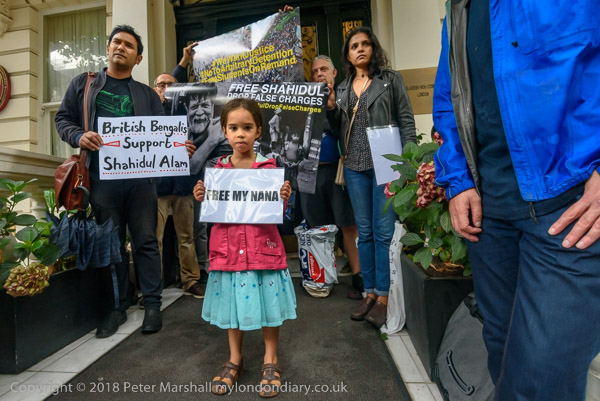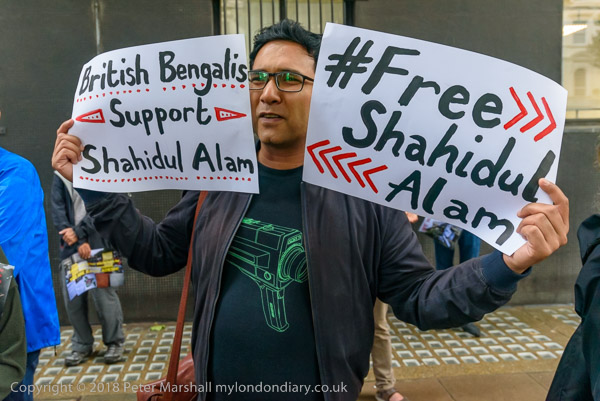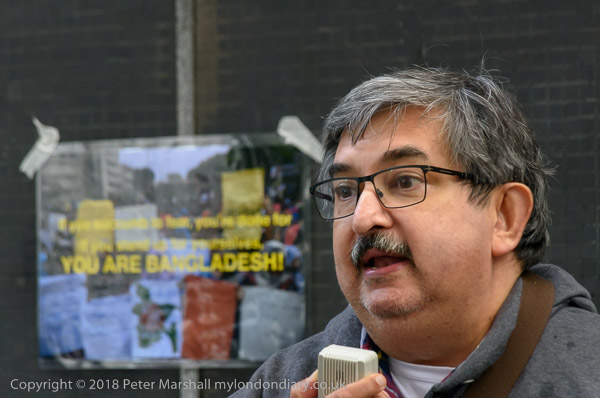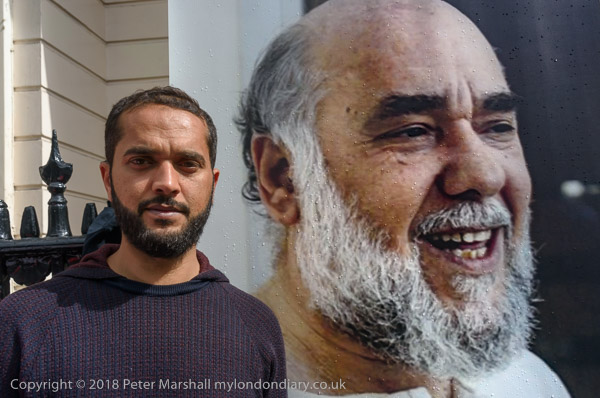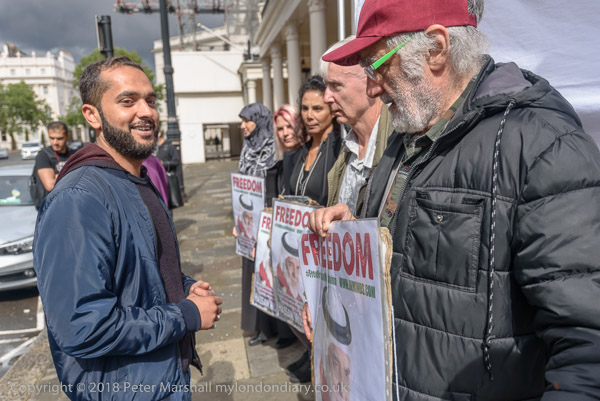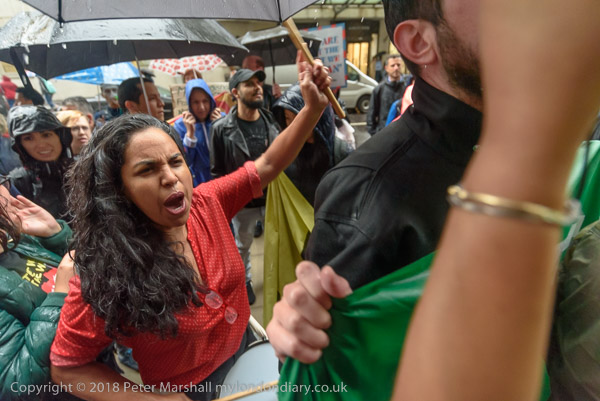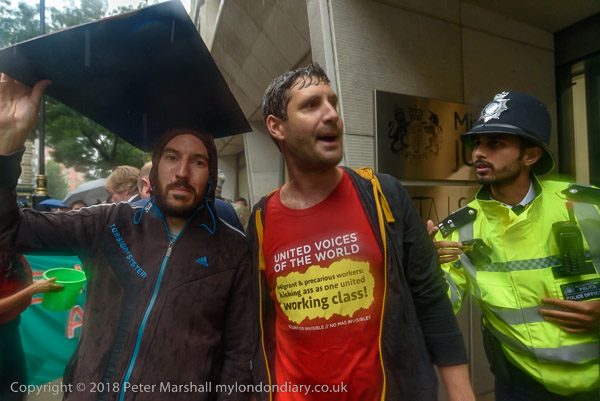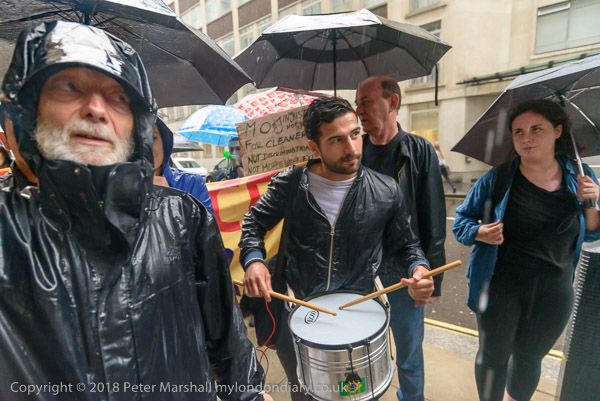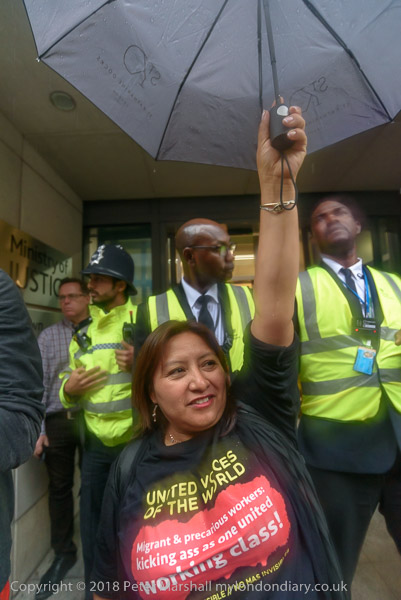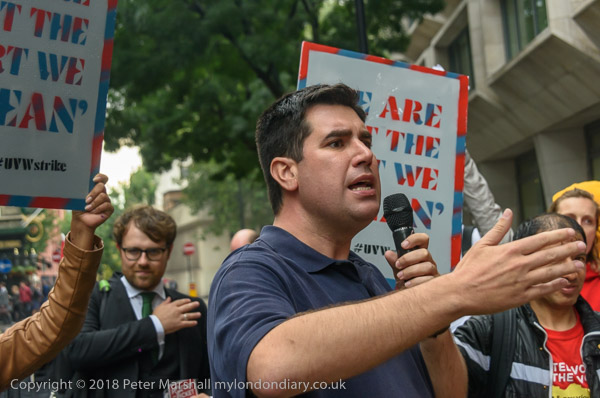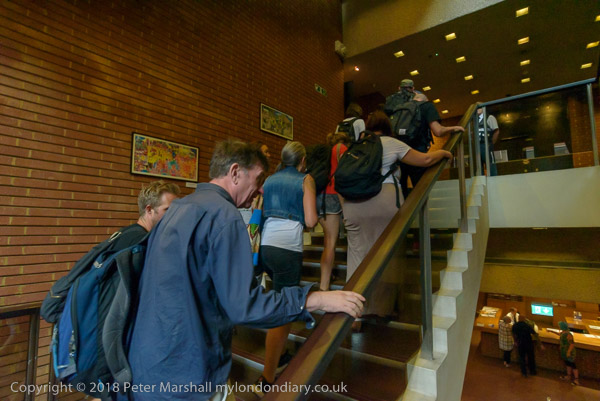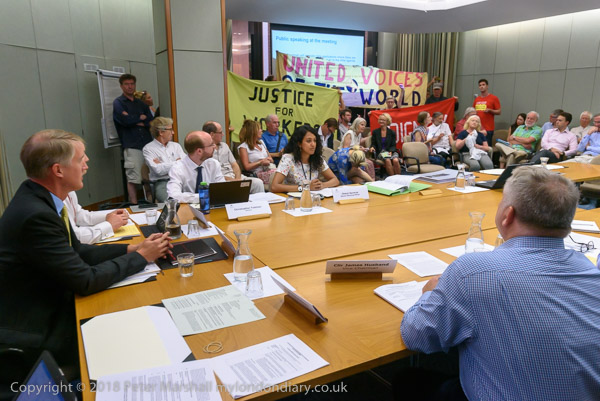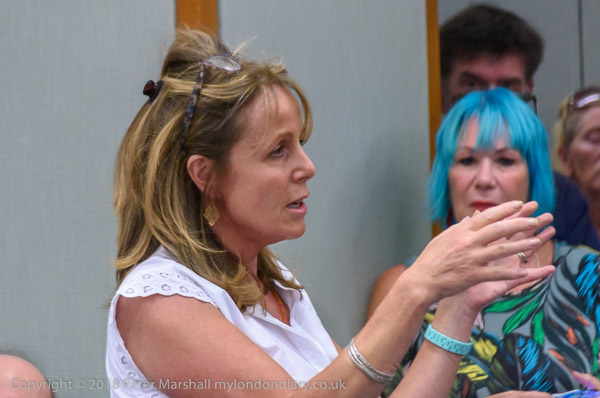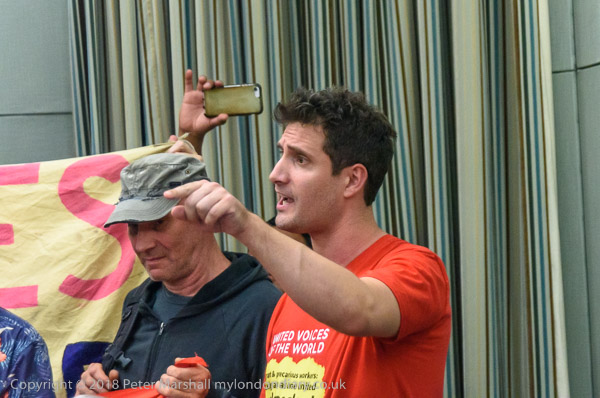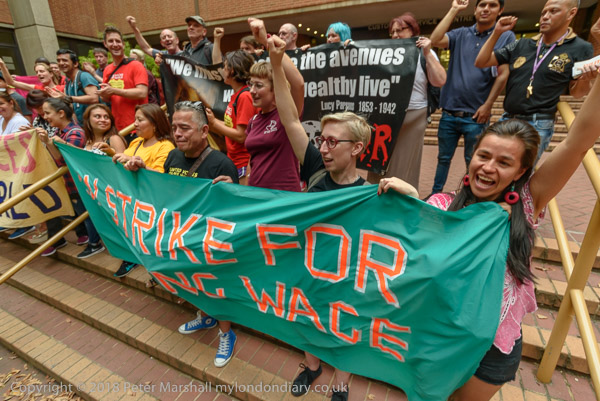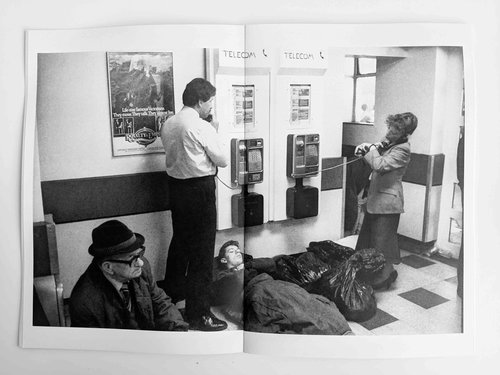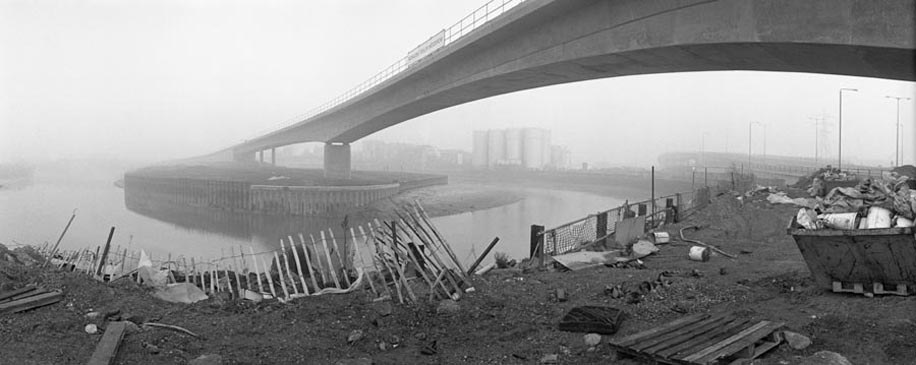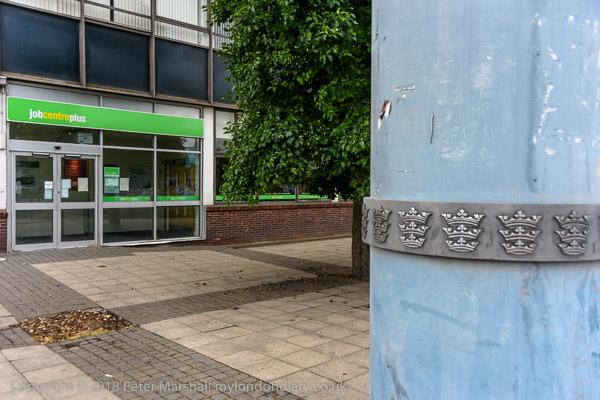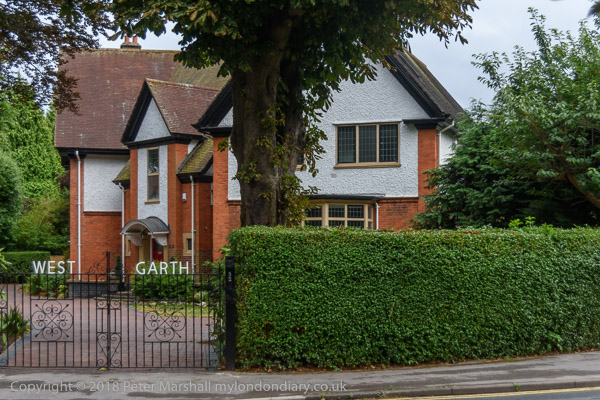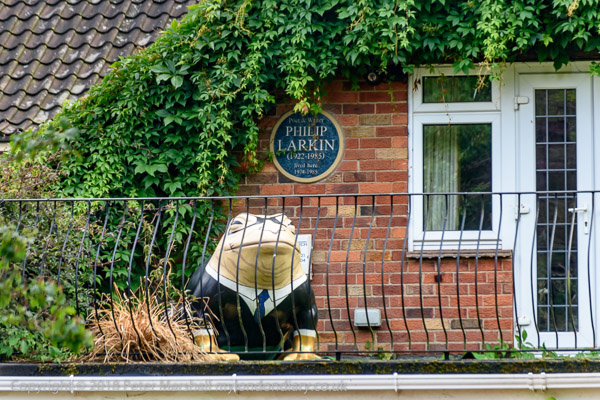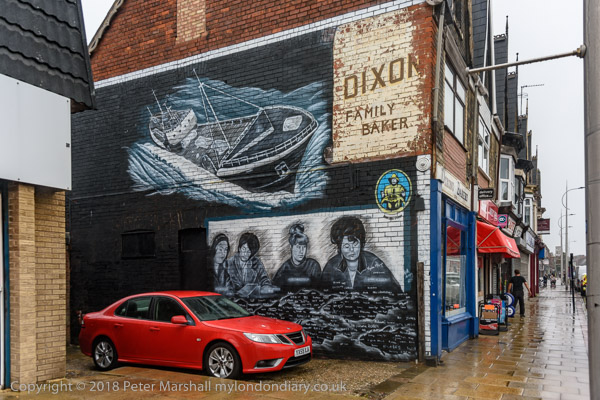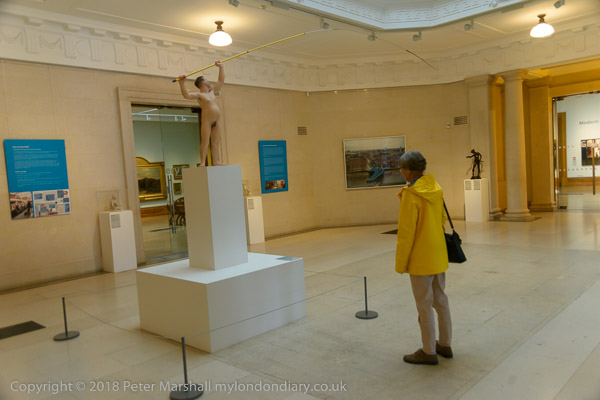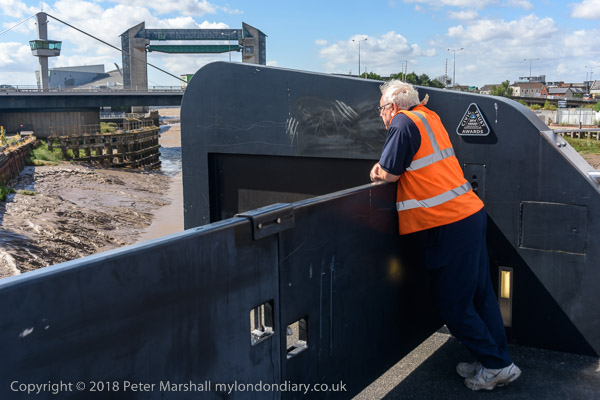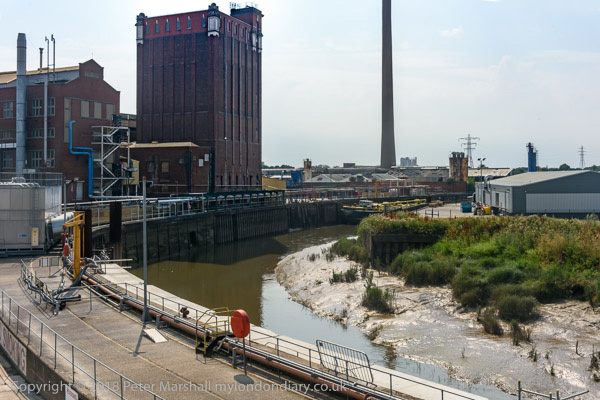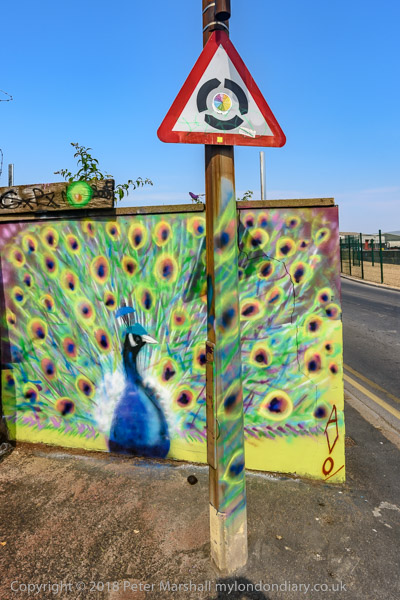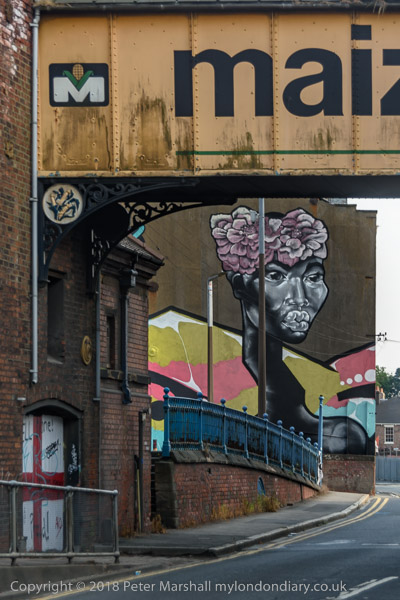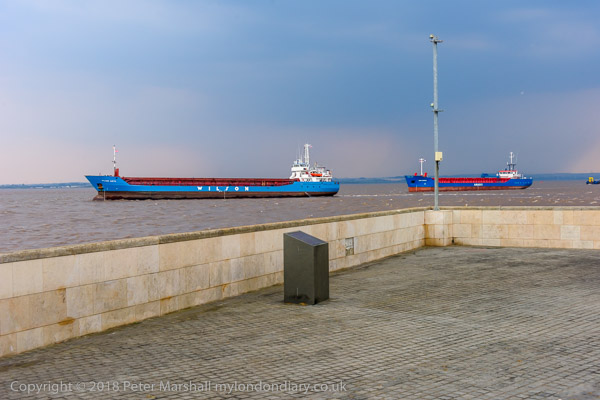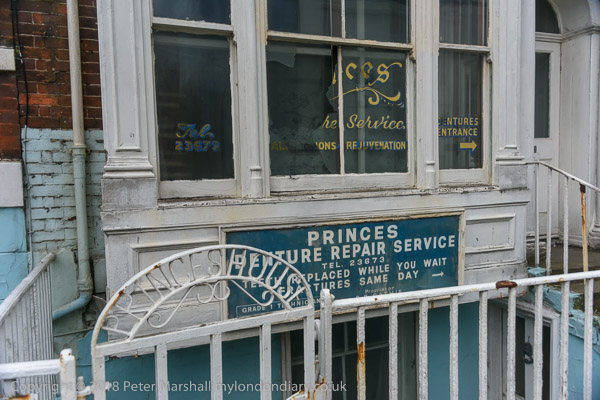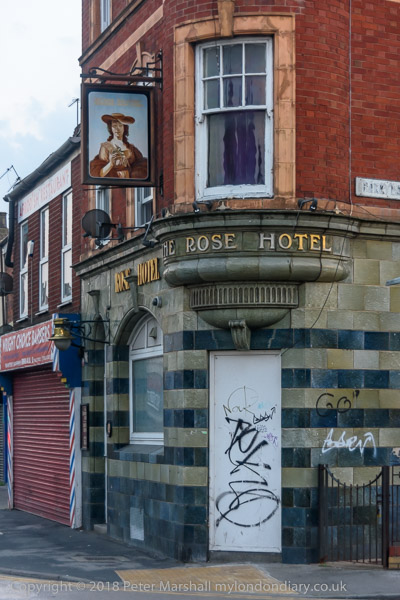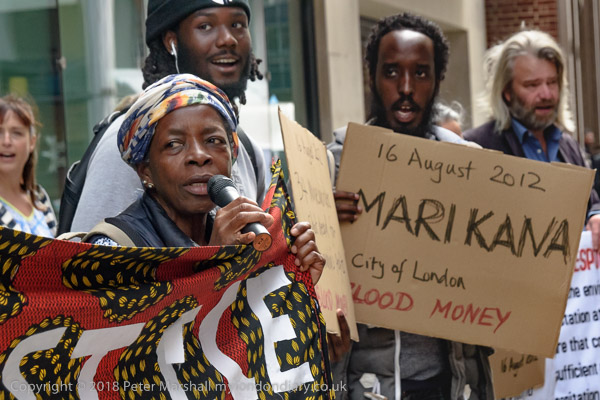
Monday 13th August was a long day for protests in London, and one that reflected the global nature of London both as a financial capital and in its population now.
The first event I covered reflected the huge involvement of the City of London in the exploitation of mineral resources around the world, and with it the callous disregard both for the countries whose resources are being plundered and in particular the workers involved. The very buildings we walked around on our tour of investors, insurers and shareholders profiting from the violence against people and nature in Marikana were a reminder of the great wealth that was appropriated from our Empire and is still being made from countries around the world.
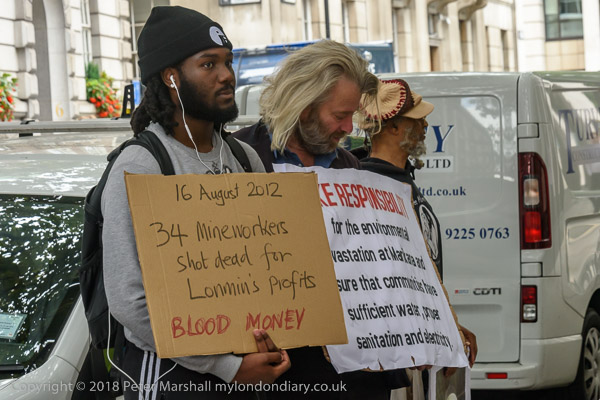
This was a story backed up by facts and figures in presentations at the brief stops the tour made as the tour stopped at Majedie, Schroders, Investec, Legal & General and BASF, the major customers for Marikana’s platinum.
The tour came three days before the 6th anniversary of the Marikana Massacre when 34 striking miners were shot dead by South African police at Lonmin’s platinum mine, for striking for better wages and living and working conditions. Those shot were trying to disperse and hide and many who survived are still in prison, and 19 were charged with murder. There has been no justice and no compensation for the victims’ families or for the injured mineworkers. One of the South African company directors implicated in ordering the police to take action is Cyril Ramaphosa, now President of South Africa.

From the city I went by bus on my way to Belgravia, taking a route that took me down Whitehall. Looking out of an upper-deck window I saw there was a protest taking place opposite Downing St, rang the bell and jumped off at the next stop.
I’d photographed the Bangladeshi Nationalist Party UK at an earlier event also calling for the release of their party leader Begum Khaleda Zia, jailed in February for five years for embezzlement; her supporters claim the charge was politically motivated.
I took a few photographs, but couldn’t stop long as I was on my way elsewhere. Friends from Bangladesh have told me that both the BNP and their opponents now in power, the Awami League are both corrupt and neither represents the interests of the people of their country. There are some things on which I don’t know enough about to take sides.
Fortunately buses in London are usually frequent, and before long I saw the next on my route and made a run to the stop to catch it, getting to Belgrave Square only around ten minutes later than intended.
Belgrave Square was for a return visit to hunger striker Ali Mushaima, campaigning for his father imprisoned in Bahrain and camping on the pavement in front of the embassy. Early in the morning the previous day someone in the embassy had gone onto the ambassador’s balcony and thrown a bucket of an unknown liquid down on him while he was asleep.
The police had been called but do not appear to have taken the attack very seriously. While diplomats have immunity the attack is thought most likely to have been carried out by one of the bodyguards who are subject to the laws of this country, but the police appear to have declined to make appropriate investigations.
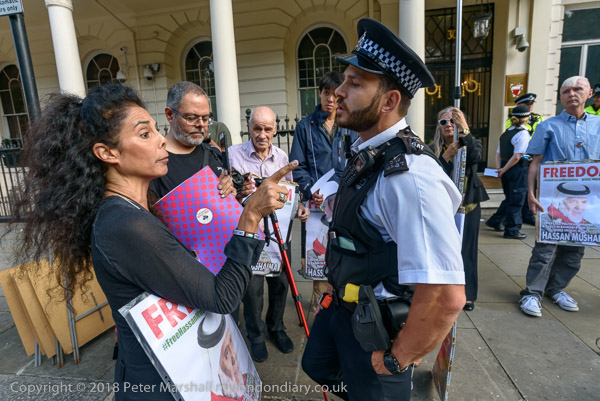
The campaigners from Inminds.com had returned to show their support in an emergency protest, along with a few friends of the hunger striker. Though the police had failed to properly investigate the attack, a small group came to harass the protesters, telling them they could not protest on the pavement outside the embassy, but had to move to the opposite side of the wide street.
There were arguments and threats of arrest, but the protesters who had previously protested in the same place with police on duty not objecting, refused to move and went ahead, performing a short piece of street theatre in which Theresa May sold arms to the Bahraini dictator which he used to shoot protesters, who were then chained up. Unlike in real life the International Criminal Court came to their rescue, released them and condemned the Bahraini regime for their crimes against humanity.
It was unrehearsed and something of a shambles, but pictures taken by Inminds were later made into an effective comic strip about the situation in Bahrain.
I rushed off and jumped on another bus to take me back to a protest outside the Brazilian embassy. I arrived shortly after it was due to start, but there were very few present and nothing much happening. Eventually more people arrived and the protest began, and I was able to take a few pictures before it was time to leave for home and some food.
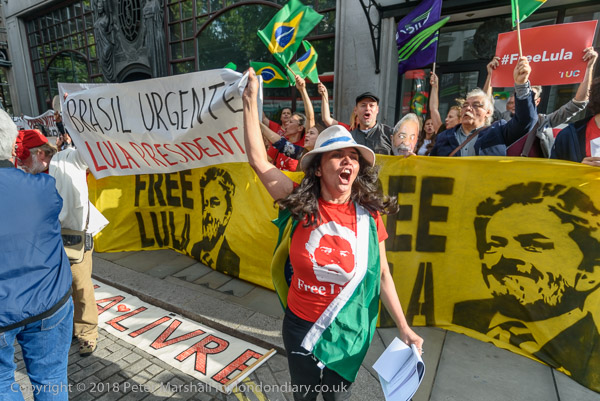
The protest by the Workers’s Party (TP) was calling for the release of former President Lula so he could stand in the October elections. The TP say that the right wing who have seized power in Brazil have brought highly dubious charges against both Lula and Dilma Rousseff to prevent them winning in the elections.
By the time the event got going, the sun was low in the sky and shining almost horizontally into my lens making it impossible to work from some positions, and there were some excessive flare made unusable. It also created some very high contrast where there were areas of sun and shade in the same images. Fortunately working with RAW images does make it possible to do a fair amount of taming the contrast, so long as detail is retained in the highlights, but it does add to processing time. Some can be handled by overall changes but faces that are half in shade and half in sun sometimes need both ‘dodging’ in the dark areas and ‘burning’ in the light parts.
More on all four events on My London Diary:
Justice For Marikana – 6th Anniversary
Release Bangladeshi opposition leader
Attack on Bahrain Embassy hunger striker
Free Lula – Brazilians for Democracy & Justice
______________________________________________________
There are no adverts on this site and it receives no sponsorship, and I like to keep it that way. But it does take a considerable amount of my time and thought, and if you enjoy reading it, a small donation – perhaps the cost of a beer – would be appreciated.
My London Diary : London Photos : Hull : River Lea/Lee Valley : London’s Industrial Heritage
All photographs on this and my other sites, unless otherwise stated, are taken by and copyright of Peter Marshall, and are available for reproduction or can be bought as prints.
To order prints or reproduce images
________________________________________________________
